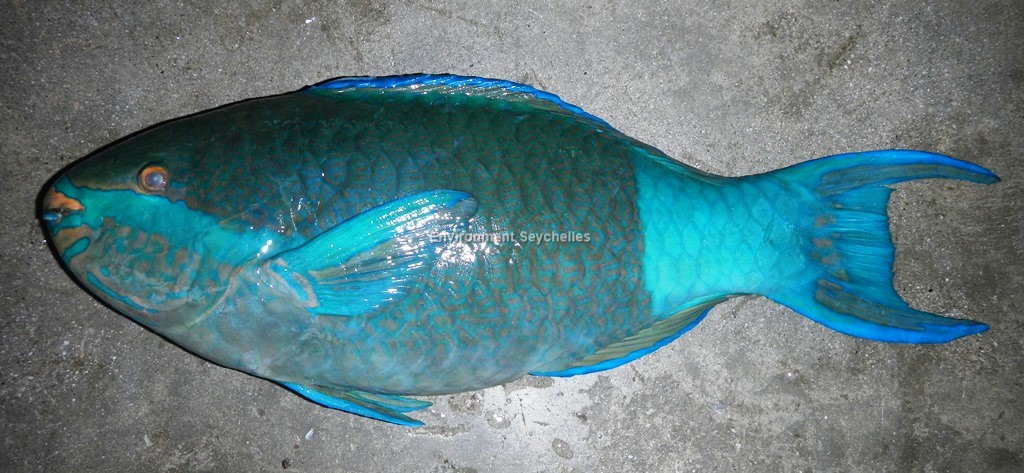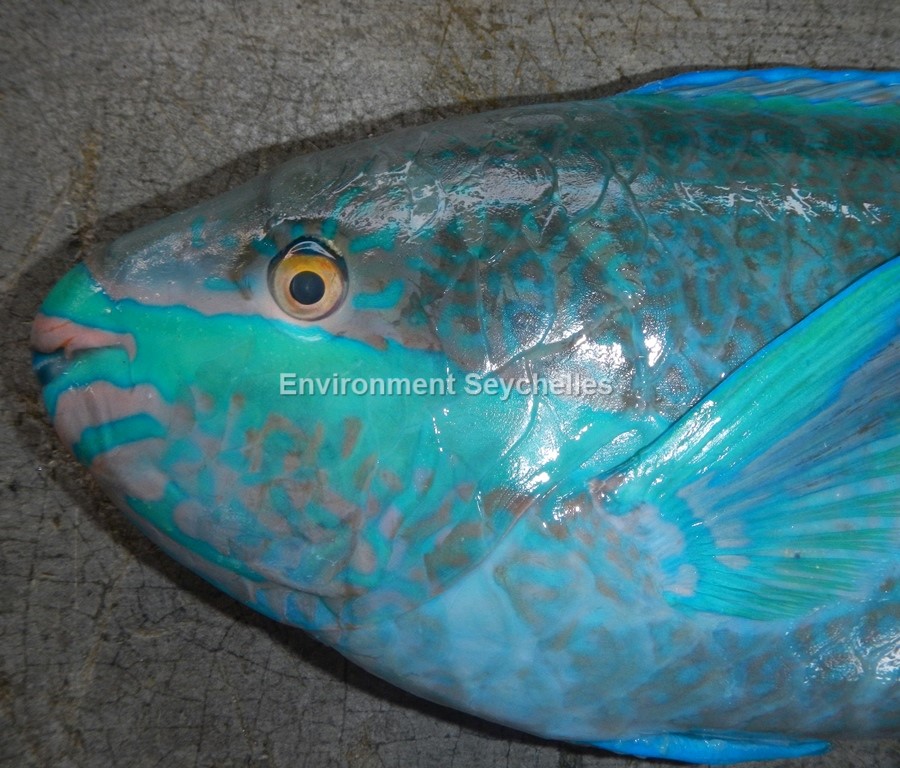Description:
Dorsal spines: 9; Dorsal rays: 10; Anal spines: 3; Anal rays: 9
Meidum-sized parrotfish.
Initial phase: body light red to light reddish brown with five dark brown stripes on side of body. Caudal peduncle pale reddish-brown without stripes.
Head and thorax brownish red, the red brightest around mouth. Iris orange yellow; dental plates white, fins light red; pectoral membranes clear.
Terminal phase: anterior ¾ of body dark bluish-green, rear of body and caudal peduncle abruptly plain, bright light blue. Colour division occurs vertically
from the base of the 5th soft dorsal ray. Anterior dark portion of body with irregular lines and small spots of orange to orange red.
A broad band of green across cheek below lower edge of orbit extending across front of snout and as two bands across chin. Head above green band coloured
like body, below band orange to salmon pink, blotched with green. Pink lines and bands on the snout, chin and head. Iris orange. Dental plates, largely
covered by lips, blue green, edged in whitish. Dorsal and anal fins orange, green basally and edged with dark blue, sometimes with faint blue green
blotches in longitudinal row. Caudal fin green with a large narrow orange crescent containing green to blue green markings. Pectoral fins green with a
band of orange in upper central part of the fin. Pelvic fins orange with broad blue lateral margin.
Size:
Maturity: Lm unknown. Range: 17 cm - ? cm. Max Length: 47 cm TL.
Habitat and Ecology:
Occurs in various coral reef habitats, but most commonly on exposed outer reef slopes, sometimes in very shallow water (depth range 1-25 m). Juveniles
occur among coral and rubble of lagoon reefs. Feeds on benthic algae. Generally solitary. Oviparous, distinct pairing during breeding. Colour pattern of
the terminal phase is intensified at spawning time.
Fishery Status:
This species is not protected or subject to fishery regulations. It is caught in the trap fishery, but is an uncommon component of the catch.
Notes:
References:
Bray, D.J. Scarus frenatus in Fishes of Australia, http://fishesofaustralia.net.au/home/species/2359 (20/03/19).
Froese, R. & D. Pauly. (Eds.) (2019). FishBase. https://www.fishbase.de/summary/5546 (20/03/19).
Randall, J.E. & Bruce, R.W. (1983). The Parrotfishes of the Subfamily Scarinae of the Western Indian Ocean with Descriptions of Three New species.
Ichthyological Bulletin of the J.L.B. Smith Institute of Ichthyology. Number 47 March1983 ISSN: 0073-4381
Russell, B. et al. (2012). Scarus frenatus. The IUCN Red List 2012: http://dx.doi.org/10.2305/IUCN.UK.2012.RLTS.T190755A17776719.en. (20/03/19).
Citation:
Nevill, J.E.G. (2019). Scarus frenatus, Bridled parrotfish. Seychelles Seatizens. www.seatizens.sc. https://seatizens.sc/species/scarus-frenatus-lacepede-1802/ (updated 16/08/22).




There are no comments